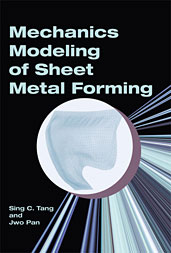Technical Paper
A Fully Variable Mechanical Valvetrain with a Simple Moving Pivot
2005-04-11
2005-01-0770
A continuously variable lift, duration and phase mechanical lift mechanism is described, as applied to the intake valvetrain of a SOHC, 4-valve per cylinder, four-cylinder production engine. Improvements in fuel economy were sought by reduction of pumping losses and improved charge preparation, and optimization of WOT torque was attempted by variation of intake valve closing angle. Adjustment of the mechanism is achieved by movement of the pivot shaft for the rocker arms. The relationship between lift, duration and phase is predetermined at the design stage, and is fixed during operation. There is considerable design flexibility to achieve the envelope of lift curves deemed desirable. The operation of the mechanism is described, as are the development procedure, testing with fixed cams, some cycle simulation, friction testing on a separate rig and dyno testing results for idle, part load and WOT.

